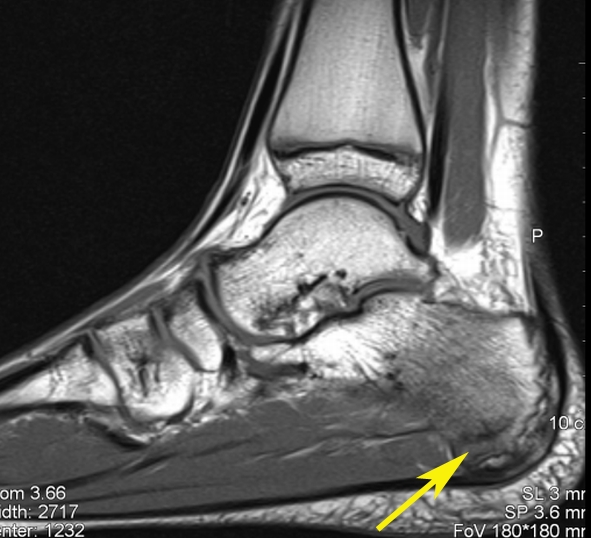The concept of a stress fracture may be familiar to many people: when a bone is put under repeated strain over a long period, the cumulative stress can cause a break. What might be less well known, is that the same repetitive stress conditions can cause a reaction in the bone before the fracture actually occurs. Such a stress reaction is usually confirmed using radiological examinations; the radiologist can spot changes in soft tissue and bone that would develop into a fracture if the stress to that body part continues.
In the case of Jordan Hasay, the second fastest American female marathon runner in history, a stress reaction found in her left heel meant she had to withdraw from the 2018 Boston Marathon. The problem was spotted during a planned MRI examination to check the progress of recovery from a separate injury. Based on medical advice, she pulled out of the event to avoid further stress and a possible fracture. Read more about Hasay’s injury here.
In the early stages of overuse injuries, when damage to bone is still not visible on x-ray, but the athlete suffers from pain, MRI may show a stress reaction or stress fracture because of slight changes in structural and compositional remodelling of the bone. MRI is specific and sensitive enough to detect such stress reactions. The MR image below, in the sagittal plane, shows a change in appearance of the heel bone, with a dark line (arrow) representing a stress fracture that is still invisible on x-ray images.

Note: image is an example – not that of the athlete named above.
Situations like Jordan Hasay’s demonstrate the value of the radiologist’s special skills. Although the reason for her MRI scan was to monitor the progress of an earlier injury, the highly trained eye of the radiologist analysing the images spotted the subtle signs of an unrelated problem. Radiologists’ deep knowledge of anatomy and how it should appear on images, enables them to spot things that look abnormal. This ability can be of crucial and sometimes even career-saving value to professional athletes.
For more information about stress fractures and stress reactions, click here.
